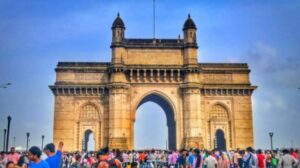Mumbai’s Air Quality Remains Underwhelming as Smog Lingers with AQI at 187

Mumbai, 21st December 2024: For the third consecutive day, Mumbai continued to be covered in a thick blanket of smog, with the overall Air Quality Index (AQI) reaching 187 on Friday morning, falling into the ‘moderate’ category. The city has been battling poor air quality since earlier this week, with the AQI entering the ‘poor’ range on Tuesday at 199, followed by 182 on Wednesday. On Thursday, several areas recorded even worse conditions, with Colaba reaching an AQI of 288, which falls in the ‘poor’ range (200-300).
Amid the ongoing smog in Mumbai and the larger metropolitan region, The Indian Express spoke with experts to understand the underlying causes of the deteriorating air quality. Mumbai is currently experiencing dry weather, characterized by low moisture levels and a noticeable drop in temperature, as evidenced by the lack of perspiration among the city’s residents. This dry weather, combined with high horizontal and vertical wind speeds, is believed to be a significant factor in the hazy conditions.
Dr Gufran Beig, Chair-Professor at the National Institute of Advanced Sciences (NIAS), explained that low humidity levels prevent tiny particulate matter (PM) from attaching to water droplets, allowing them to remain suspended in the air. Moreover, high vertical wind speeds push the pollution layer upwards until it reaches the inversion layer, where it is trapped. This creates the hazy sky seen from the ground.
In addition to weather conditions, pollution from open burning, construction sites, and vehicle emissions contributes significantly to the city’s air quality decline. Bhagwan Kesbhat highlighted that pollution from construction activities and vehicles travelling to and from these sites is exacerbating the problem. He also pointed to inadequate enforcement of regulations in major infrastructure projects, such as those in Navi Mumbai.
Bhushan Gagrani, Mumbai’s municipal commissioner, acknowledged that while industries largely follow regulations, vehicle emissions and construction activities remain significant sources of pollution. He stressed the importance of stricter enforcement of regulations to address these issues.
Despite the persistent smog, Mumbai’s overall AQI has remained in the moderate range. However, experts noted that many of the city’s air quality monitoring stations are located in greener areas, which may not accurately reflect the true air quality across the city. According to international guidelines, air quality stations should be spread across different environments, including traffic-heavy zones and industrial areas, to give a more accurate picture of overall air quality. Mumbai is one of the four cities in India with an early warning system (SAFAR), which follows these guidelines, but the non-functional SAFAR mobile app raises concerns about whether the AQI readings are based on selective, cleaner stations.
Data from the Central Pollution Control Board (CPCB) on Thursday revealed that, out of 30 stations in Mumbai, 24 were active. Among these, eight stations recorded a ‘poor’ AQI above 200, while the rest reported ‘moderate’ air quality. None of the stations recorded a ‘satisfactory’ AQI. For context, AQI levels from 0-50 are considered good, 51-100 satisfactory, 101-200 moderate, 201-300 poor, 301-400 very poor, and above 400 is classified as severe.





